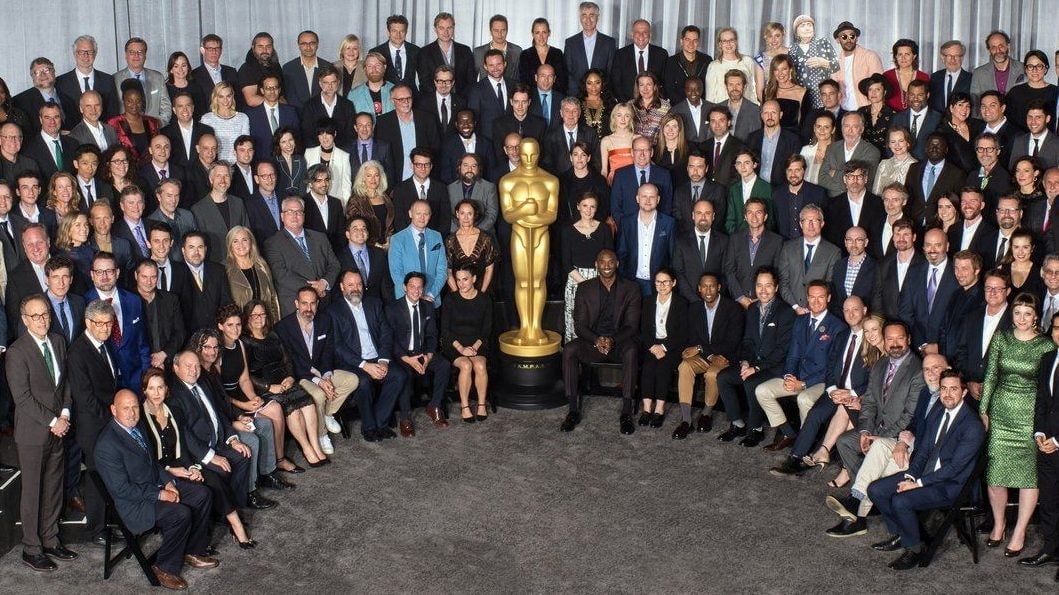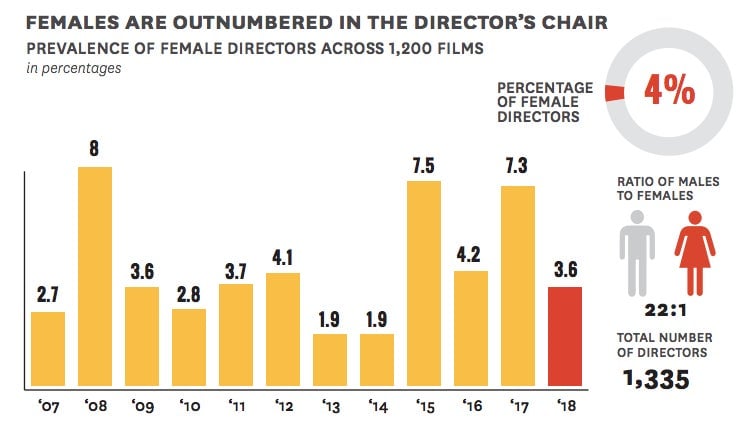Hollywood’s diversity gains don’t include women
When it comes to diversity in Hollywood, it’s still one step forward, two steps back. And for women, there have been no steps at all.


When it comes to diversity in Hollywood, it’s still one step forward, two steps back. And for women, there have been no steps at all.
The University of Southern California’s Annenberg Inclusion Initiative today released its annual Hollywood diversity report (pdf), a comprehensive look at inclusion in the film industry since 2007. Despite public pressure to have the people who make movies look more like those watching them, Hollywood is still overwhelmingly male and white. Of the 1,200 highest-grossing films of the last decade, 96% were directed by men. Among editors, 80% were white men. And 72% of producers were white men.
There was one important diversity gain in 2018: More than 14% of the directors of the 100 highest-grossing movies last year were black, a 200% increase from 2007, when only 7% were black. But only one of those black directors—A Wrinkle in Time director Ava DuVernay, was a woman. Four black directors had films gross more than $100 million this year—DuVernay’s was the first one directed by a black woman to do so.
That’s about the extent of improvements Hollywood made in diversity last year.
Almost everywhere else, the industry either made no substantial movement, or actually regressed. Only 3.6% of 2018’s top-grossing films were directed by women—down from 7.3% in 2017 and hardly any different from 2007, when women directors constituted 2.7% of that year’s top films.

Not only are women not directing many films, but the few women directors that do make films usually don’t get to make more. Almost half (46%) of the male directors profiled went on to make a second film, while only 17% of women directors were afforded the same opportunity. Even though 28% of narrative independent films since 2007 were directed by women, only 4.3% of the highest-grossing movies were, showing that women who direct indie movies aren’t given the chance to make bigger, more mainstream fare.
“Women aren’t given as many chances to be hired again by studios, and that makes it more difficult for women to see this as a career path they can pursue in order to provide for themselves and feed their families,” Katherine Pieper, the study’s co-author, told Variety.
That dearth of opportunity is even more startling when looking at the age range of directors. Male directors’ careers span seven decades (20s through 80s) while women directors span just four (30s through 60s). None of the 1,200 films analyzed by Annenberg were directed by a woman under 30 or over 69. Meanwhile, 45 men in those age ranges directed films. Just eight women in their 50s directed films—while 281 men in their 50s did.
Diversity in “below-the-line” industry jobs was essentially nonexistent. Almost all cinematographers (97%); camera operators (99%); and composers (98%) were men. Out of 281 gaffers (the head electrician on a film set often responsible for the lighting), not a single one was a woman.
This is all despite proof that female-led movies across genres outperform male-oriented box office, and women now make up a majority of frequent filmgoers.